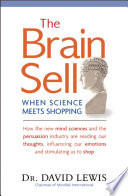

The book highlights the importance of creating memorable experiences for consumers. It argues that in a crowded marketplace, simply offering a product or service is not enough; businesses must create experiences that engage customers and foster loyalty. The author provides insights into how brands can design experiences that resonate with their target audience, using sensory marketing and emotional storytelling. By focusing on the overall customer experience, businesses can differentiate themselves and build lasting relationships with consumers.
Continue readingThe book begins by emphasizing the importance of the emotional brain in decision-making processes. It explains that while logic plays a role, emotions significantly influence consumer behavior. The author introduces the concept of 'emotional triggers' that can sway purchasing decisions. By understanding how emotions drive actions, marketers can craft messages that resonate on a deeper level. The book provides examples of successful campaigns that tapped into emotional responses, illustrating the power of storytelling and relatability in marketing strategies.
Continue readingIn this section, the author delves into the psychology behind persuasion. Drawing on research from behavioral economics and psychology, the book outlines key principles that marketers can use to influence consumer choices. Concepts such as scarcity, authority, and social proof are examined in detail. The author provides practical applications of these principles, showing how they can be integrated into marketing strategies to create compelling offers and drive conversions. This idea emphasizes that understanding the science of persuasion can lead to more effective marketing campaigns.
Continue readingStorytelling is presented as a powerful tool in marketing. The author explains that stories can evoke emotions, convey messages, and create connections between brands and consumers. By using narratives, marketers can make their messages more relatable and memorable. The book includes examples of brands that have successfully used storytelling to engage their audiences, illustrating how a well-crafted story can enhance brand perception and drive consumer action. This idea emphasizes that storytelling is not just a technique but an essential component of effective marketing.
Continue readingAs social media continues to play a crucial role in consumer engagement, the book discusses strategies for leveraging these platforms effectively. The author outlines how businesses can use social media to connect with their audience, share stories, and foster community. The section emphasizes the importance of authenticity and transparency in social media marketing, as consumers increasingly seek genuine connections with brands. The book provides practical tips for creating engaging content and building a loyal online following, highlighting the potential of social media as a marketing tool.
Continue readingThe book underscores the significance of data in modern marketing. The author advocates for a data-driven approach, encouraging businesses to leverage analytics to understand consumer behavior and preferences. This idea discusses various tools and techniques that can be used to collect and analyze data, enabling marketers to make informed decisions. By understanding what drives consumer choices, businesses can tailor their strategies to meet the needs of their audience, ultimately leading to more effective marketing efforts.
Continue readingFinally, the book addresses the importance of trust in building brand loyalty. The author discusses how consumers are more likely to remain loyal to brands they trust, and outlines strategies for fostering trust through transparency, consistency, and quality. This idea emphasizes that trust is not built overnight; it requires ongoing effort and commitment from businesses. The book provides examples of brands that have successfully cultivated trust with their customers, illustrating the long-term benefits of prioritizing trust in marketing strategies.
Continue reading